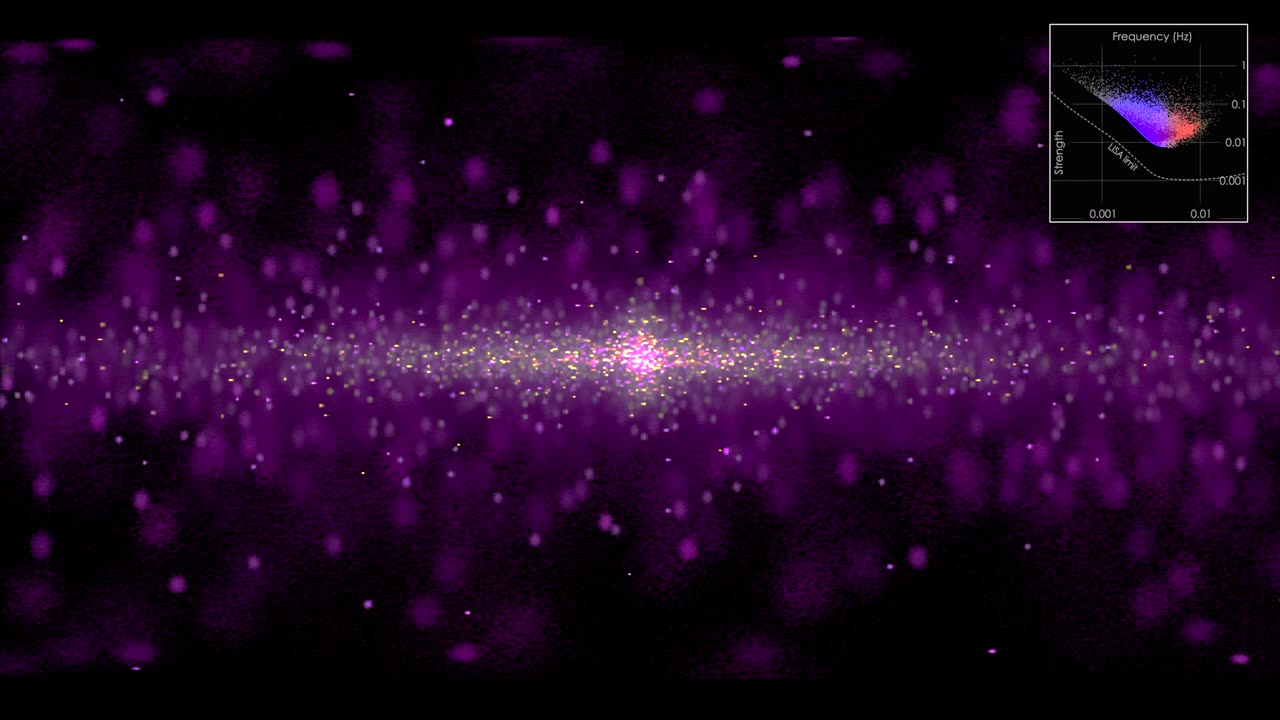Premium Only Content

Synthetic Gravitational Sky
Watch as gravitational waves from a simulated population of compact binary systems combine into a synthetic map of the entire sky. Such systems contain white dwarfs, neutron stars, or black holes in tight orbits. Maps like this using real data will be possible once space-based gravitational wave observatories become active in the next decade. Brighter spots indicate sources with stronger signals and lighter colors indicate those with higher frequencies. Larger colored patches show sources whose positions are less well known. The inset shows the frequency and strength of the gravitational signal, as well as the sensitivity limit for LISA (Laser Interferometer Space Antenna), an observatory now being designed by ESA (European Space Agency) in collaboration with NASA for launch in the 2030s.
-
 LIVE
LIVE
Akademiks
56 minutes agoFIRST WEEK NUMBERS ARE IN! Did Drake Help Him Sell?
4,417 watching -
 LIVE
LIVE
Man in America
1 day ago🔴 LIVE: Is Trump Using Israel to CRUSH the CCP and BRICS Alliance?
1,689 watching -
 8:15
8:15
Russell Brand
10 hours agoJOE ROGAN HAS HAD ENOUGH!
82.2K162 -
 0:46
0:46
Dr Disrespect
6 days agoIt's not just a stream... it's an experience
873K5K -
 LIVE
LIVE
SpartakusLIVE
4 hours agoMASSIVE Biceps, BOULDER Shoulders, even GREATER IQ leaves the masses BREATHLESS
442 watching -
 LIVE
LIVE
JdaDelete
22 hours ago $0.48 earnedOregon Trail Deluxe (1992) - Dudes with Dysentery
571 watching -
 LIVE
LIVE
RanchGirlPlays
3 hours agoNew Season of Fortnite! Chapter 6 Season 1 💚
431 watching -
 48:19
48:19
The Why Files
17 days agoProject Blue Beam: Staging a Fake Alien Attack to Take Over the World
35.3K98 -
 2:11:08
2:11:08
vivafrei
13 hours agoEp. 238: Kash Patel to CLEAN FBI'S CLOCK! Ray Epps DISMISSED! Trump Charges GONE! Debanking AND MORE
161K149 -
 LIVE
LIVE
Vigilant News Network
7 hours agoCancer Remission Achieved with Low-Cost Drug | Media Blackout
1,376 watching